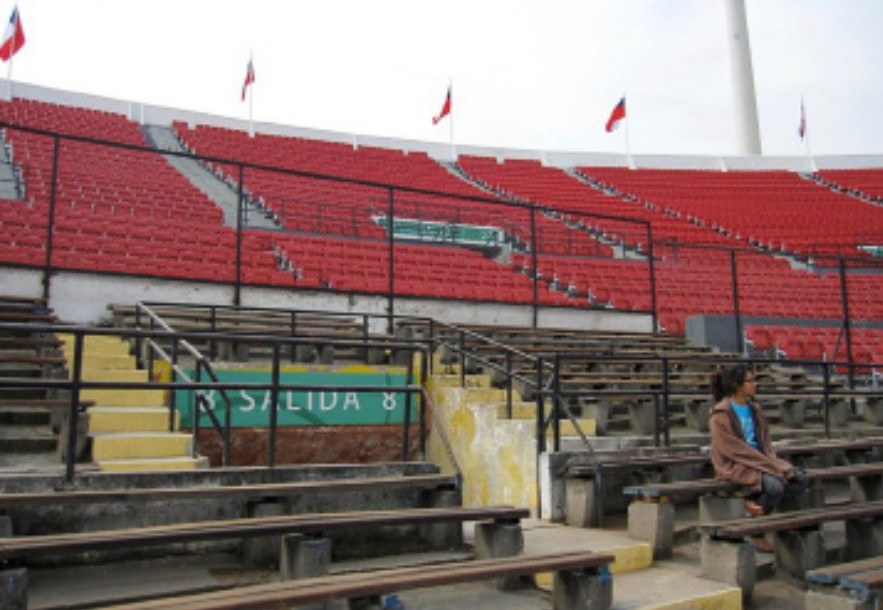| Location | Santiago, Chile |
| Date | 2002-10 |
| End User | Visitors to the stadium |
| Implementing Agency | Ministry of Public Works |
| Design Agency | Regional Metropolitano de ex Presas y Presos Políticos |
| Design Team | Alexandra Buzhynska, Marcel Coloma, Carlos Duran, Claudio Guerra, Wally Kuntsman |
| Funding | Chilean government; various |
| Cost | $2000 US + material donations |
| Occupancy | 47 000 people |

The Escotilla 8 Memorial features original benches from Chile’s National Stadium. Photo: Mark Boelter
For 58 days in the autumn of 1973, Chile’s National Stadium served as a holding place for political prisoners who were tortured and sometimes executed. Following the military coup that overthrew the democratically elected government of Salvador Allende, General Augusto Pinochet and his junta detained Chilean nationals and foreigners, priests and students, and men and women in the stadium. Estimates of the number of individuals incarcerated on stadium grounds from September to November of 1973 range from 7000, as reported by the Red Cross, to often-cited figures of between 20 000 and 40 000 people.
Left untouched after a multi-million dollar stadium renovation completed in 2010, Escotilla 8 is a potent memorial in situ. Narrow planks rest on worn concrete posts and uneven flooring. These wooden bleachers, a vestige of the 1973 stadium structure, stand in stark contrast to the homogenous, and pristinely-aligned industrial seating throughout the rest of the renovated structure.
The memorial exposes a national scar. It is part of a larger effort to redress the wrongs of a violent and troubled period in Chile’s history that began at the turn of the century as the people began to reflect more openly on the Pinochet era. In 2003, Chile’s National Stadium was declared a national monument and some parts of the stadium, such as Camarín 3, a dressing room where prisoners in 1973 found themselves isolated and hidden from the outside world, were assigned a special protection status. Following these designations, the Regional Metropolitano de Ex-Presas y Presos Políticos made plans for Estadio Nacional,Memoria Nacional. This stadium memorial project includes murals, a memorial wall, plaques, sculptures, exhibits, a museum, the preservation of writings inscribed on stadium walls by prisoners, and the Avenida de la Memoria, an axial allée that is both a memorial walk and a ceremonial entrance to the stadium.
For many, the mere sight of the wooden benches—an island of weathered grey in a sea of bright crims—stirs a rush of memories and emotions. For those unfamiliar with the events that transpired in the stadium during that period, Escotilla 8 engages them visually, provoking questions about what led to that point in history.
Despite official approval of the entire memorial plan in 2010, only Escotilla 8 and several commemorative pedestals have been built thus far. Questions of how to convey the traumas of the coup and Pinochet years and integrate those memories into the present are highly contested and controversial in Chile. Opposing views on the value of public remembrances, particularly those that recall atrocities and violations of human rights, have impeded the construction and funding of the remaining phases of Estadio Nacional, Memoria Nacional.



above image: Photographs of the Stadium as a detention center in the ‘70s. Photo: Mark Boelter
top right: Candles placed inside the Escotilla 8 Memorial at Chile’s National Stadium. Photo: Mark Boelter
bottom right: A temporary installation on the Stadium’s gates for the missing. Photo: Mark Boelter
















READ OR LEAVE A COMMENT